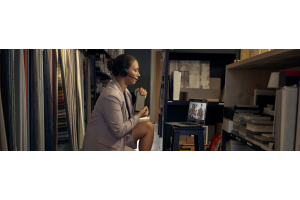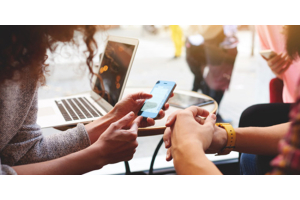How to Share Your Location with Friends
January 13, 2022

We’re more connected to each other than ever before. Chances are you can reach any one of your friends or family members in an instant through an app on your phone or PC. But what if you want to do more than chat with them? What if you want to let them know where you’re located at this very moment?
Whether you need help finding the best place to park or you’re worried about a child on their way home from school, there are all kinds of reasons to want to share your location. Here are the best tools available to get the job done.
Best ways to share your location
Most of these tools are readily available but will require a compatible mobile device. A few also work with a desktop. Be sure to check the app’s store pages to see if you need to buy it. Some apps are free for initial use but require paid upgrades to access the full suite of features.

1. GOOGLE MAPS
If you use Google services, such as Find Your Phone, you can share location info easily with others. You have to be of legal age and in the U.S., but minors can share their location using the Family Link App. The other person just needs a Google account.
Here’s how to use this service:
- Add their Gmail address to your Google Contacts list.
- Sign into the Google Maps app on your iPhone, iPad, or Android phone or tablet.
- Tap on your profile avatar and select Location sharing.
- Select New share and specify how long you want your location information to be shared with the person.
- Pick the person you want to share with, and click Share.
If the person doesn't have a Google account, you can instead copy a share link when you choose New Share. You can send this link through email, SMS, or messenger for up to 24 hours. You can also stop sharing at any time by clicking the profile of the person you shared with or by updating the share link.
You can use a similar process from your Google Desktop dashboard, too. It’s similar to using the device locator function for looking for a lost or stolen phone.
2. FIND MY FRIENDS

If you own an Apple device, the Find My Friends app makes it easy to locate loved ones. You can also use it to track down your lost device’s location. Find My Friends is basically a Find My iPhone alternative that also includes phone tracking for any connected user.
Here’s how to use it:
- Open the app and select People.
- Tap share my location and type in the phone number or name of the person you want to send your location information to
- Send, and specify the amount of time to share.
You can also use this app to share your ETA (estimated time of arrival). This app is standard on Apple devices, including Apple Watches, so there's no need to pay for a third-party app. When you share your location, the recipient can share their location, too.
3. MESSENGER
If you use Facebook Messenger to communicate with friends on your Android device, you may enjoy this Find My Friends alternative that works on any device. You can use the integrated maps feature to share your location.
- Open a new message to your friend, and click the four dots to the left of your message text box.
- The options will open, one looking like a blue arrow. It may be labeled Location.
- Click the arrow to share.
If it is your first time doing this, you need to allow location access to the app. Note that this app only works if the person receiving the message uses Messenger, too. It also uses Google Maps, so it may show up differently on a phone or device that doesn’t have Google Maps.
4. LIFE360 FAMILY LOCATOR

Life360 Family Locator has more than one million user reviews, and you can use it on almost any device. While the app is free to start, the premium features cost extra. This app can do a lot, including sending silent alerts to emergency services if you get into trouble, identity theft protection, and automatic crash detection.
Many parents use this app with their children to not only see where they are, but to receive notifications if they get into serious physical trouble. The Gold version, for example, comes with individual driver reports to see how fast your kids drive or what they may be doing behind the wheel. It also includes emergency roadside assistance and live customer support with a nurse helpline.
5. MICROSOFT FAMILY SAFETY
If you aren’t sure about sharing your information with a new company or app, consider trusting the name Microsoft. The Microsoft Family Safety app lets you easily save favorite places, like a school or a friend’s house, and it doubles as a parental control app to filter out unsavory apps and games.
It integrates with your Microsoft Edge browser, so you can block unsafe websites and receive digital activity reports. This is all in addition to their GPS tracking data, which lets you share location with family. It also shows you the top speed and hard braking when your child is driving.
To use this program, all users need a Microsoft family ID. It's available for Android and iOS devices.
6. WHATSAPP
People around the world use WhatsApp to chat with friends and family. It’s also a simple tool for sharing your location. To do so:
- Open the app and start to compose a message to your choice of contact(s).
- Click the paperclip icon to select an attachment.
- Choose the Location option
- Send to those you wish to share your location with.

This process varies a bit from iOS to Android, but WhatsApp easily integrates with location-sharing features on your phone. You don’t need any additional apps as long as your permissions allow for location services.
7. GPS PHONE TRACKER
Have you wanted to know where your child is during their drive home from college? That is a top use for GPS Phone Tracker, which is available for Android or Apple for free, plus extra fees for the premium features.
Truckers also use this app for tracking their location and ensuring they hit the miles they need. This app also doubles as a receipt tracker, making it a good pick for managing business expenses and mileage logs for expense reports and self-employment taxes.
8. GLYMPSE
Glympse is a free app that works on almost any platform, including Apple, Android, and Windows. It also requires no registration to use the GPS location services to tell others where you’re at. Sharing location information with the app is called "sending a Glympse," and you can do it via email, messenger, and social media.
The real-time sharing updates automatically expire, too, so you don't have to remember to actively stop sharing your location. Plus, your friends and loved ones don’t need the app to view your Glympse.
9. GEOZILLA
The GeoZilla app launched as a simple way to keep everyone in a group notified of each other’s whereabouts. It’s since grown into a subscription-based program that sends safe driving alerts and related notifications. Pair it with an optional GPS location tracker to keep tabs on a child, toy, or vehicle. You can even attach a tracker to your car keys and never lose them again.
10. EMERGENCY SERVICES
All phones come with emergency services, even if your device lacks an active data plan. To take advantage of emergency services (and only in an emergency), just use the Emergency Call feature for Android phones or the SOS feature for Apple phones.

Services may be limited if you don't have an active phone plan, but where available, emergency services such as police or EMS will receive your GPS location information along with your call. Just make sure the location services are enabled in your emergency settings before you need this help.
Summary
There are so many reasons to share your location, from checking up on kids during bad weather to updating a client when you’re running late to a meeting. The key to using any app successfully is to know how the privacy settings work and how long the tracker stays active. Any app worth your time should have an easy "kill switch" option to stop tracking at your command.
No app should ever offer to track others without their permission, either. They should always have active opt-ins to use it for keeping tabs on where others are going. If you don't see this as an app feature, consider another option.
You’ll also want to look at any premium features with a free trial before you commit. Some apps with optional paid upgrades work on a subscription plan and may promise lower prices with an annual payment. It’s best to try before you buy, because your needs may change. It will take time to put the app into practice, and this includes your whole crew trying it out to see if it truly fits your lifestyle.
About the Author: Linsey Knerl is a contributing writer for HP Tech Takes. Linsey is a Midwest-based author, public speaker, and member of the ASJA. She has a passion for helping consumers and small business owners do more with their resources via the latest tech solutions.
Article reposted with permission from HP Tech Takes






